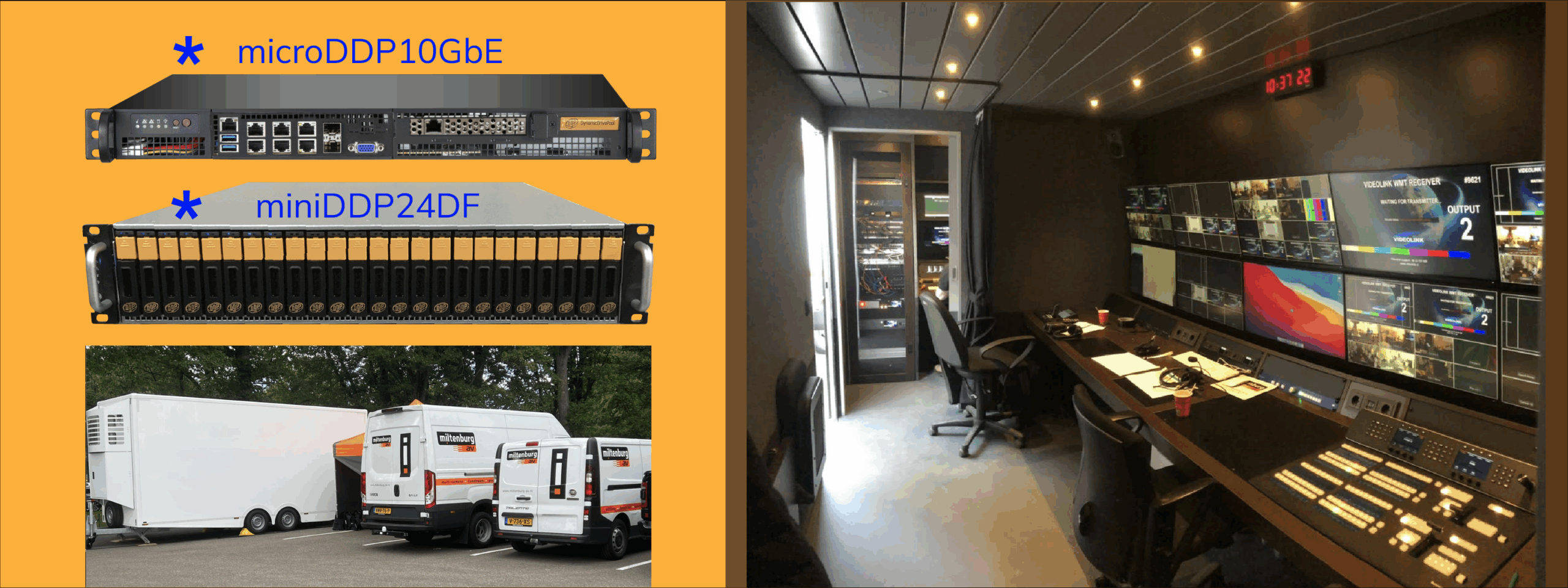
A Rental Company Changed Its Shared Storage
Some years ago
The rental company has been a DDP customer for a long time and started using DDP systems based on hard drives. Their customers are worldwide and range from storage for MTV Awards and Tomorrowland to corporate presentations for shareholders. They are growing steadily.
When the microDDP series came out, they tested it and decided to use it alongside their hard drives. Often in combination with Mac drives with Softron as the ingest solution and Premiere for editing. In other situations EVS XFiles was used.
Sometimes, while the ingest is still running, they start editing the material on other computers while the file is still open. This is called ‘editing while ingest’, also known as ‘growing files’.
Because DDPs are SAN systems, this option is included as standard with every DDP, including Windows, Linux and other ingest solutions.

SSD systems have a smaller footprint
take up less space
consume much less power
and are more user-friendly.
Also no mechanical moving parts
so much less sensitive to shocks
how convenient is that!

Recently
This company also rented these microDDPs to others.
For some large projects abroad they decided to invest further in SSD technology and bought two miniDDP24DFs with a capacity of 96TB each. We don’t think they are using their (depreciated) hard disk systems anymore…
Since SSDs have no seek time, it doesn’t matter what audio, video or movie format customers come up with, the number of streams the system can deliver is the bandwidth of 6GB/s divided by the bandwidth of the video format. For example, take a video format DNxHD185 of 18MB/s. 6GB/s equals 6000MB/s. So 6000MB/s divided by 18MB/s equals 333 DNxHD185 streams.
A small footprint
Another important factor is that SSD systems have a smaller footprint, take up less space, consume much less power and are more user-friendly. And no mechanical moving parts, so much less sensitive to shocks, how convenient is that!

